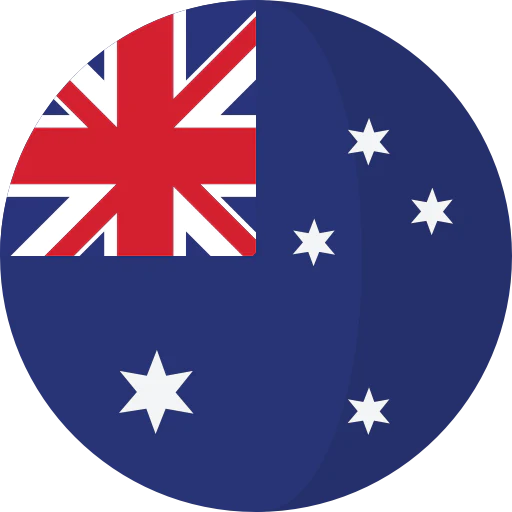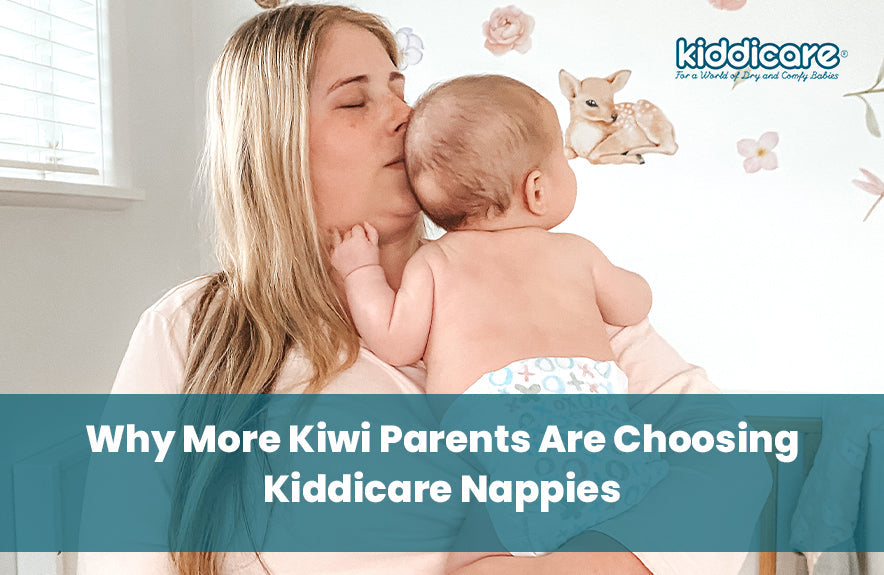Parenting is a journey filled with small choices that add up to significant impacts on your baby's comfort, health, and happiness. Selecting the appropriate nappy is one of the most essential everyday decisions that each parent must make. For Kiwi families, that choice has increasingly led them to Kiddicare Nappies, a brand that blends comfort, affordability, and reliability in a way that truly resonates with New Zealand parents.
But what makes Kiddicare stand out from other options in the market? Why are more mums and dads across the country switching to Kiddicare and not looking back? Let's dive deep into the story behind this growing shift, explore practical tips on nappy sizing and leak prevention, and understand why disposable nappy pants are booming in 2025.
The Rise of Kiddicare: Why Kiwi Parents Are Switching
Over the past decade, Kiddicare has evolved from a small brand into one of New Zealand's most trusted names in baby care. This rise hasn't happened by chance; it's a direct result of listening to parents, designing with Kiwi families in mind, and delivering consistent quality.
Designed for Kiwi Families
Every market is different, and Kiddicare has tailored its products specifically for Kiwi parents. Whether it's understanding that New Zealand families often prefer eco-conscious choices or recognizing that affordability is a key factor for many households, Kiddicare nappies are developed with local needs at heart. Parents appreciate that the brand is not just importing generic products, it's creating nappies made for their lifestyle.
For example, Kiddicare has accounted for New Zealand's varied climate. Babies in warmer regions need breathable nappies, while in colder areas, parents want nappies that still perform overnight without leaks. By focusing on real-world conditions, Kiddicare creates nappies that fit seamlessly into Kiwi households.
Additionally, Kiddicare listens to feedback from parents regarding their babies' activity levels. Crawlers and walkers require more flexible nappies with stretchable waistbands and leg cuffs, and Kiddicare has responded with innovations that ensure active babies remain comfortable without leaks or restrictions.
Affordability Without Compromise
Raising a child in New Zealand is a beautiful experience, but it also comes with significant financial pressures. One of the most considerable recurring costs for families is nappies; thus, affordability is essential. Kiddicare has put a lot of effort into finding a way to offer reasonably priced nappies in New Zealand without sacrificing quality. By keeping production efficient and focusing on direct-to-parent distribution, Kiddicare offers premium nappies at a fraction of the cost of many international brands.
Parents often compare prices per nappy across different brands. While international giants can sometimes cost upwards per nappy, Kiddicare manages to provide high-quality nappies for significantly less. Over two years, this difference can save Kiwi families thousands of dollars that can instead go toward quality food, childcare, or family experiences.
Moreover, the brand frequently offers bundle deals, subscription services, and loyalty programs, which further ease the financial burden on families. For parents managing multiple children, these savings accumulate, allowing them to focus more on the joys of parenting rather than stressing over recurring costs.
Soft, Safe, and Gentle
Parents want reassurance that nappies won't cause rashes, irritation, or discomfort. Kiddicare nappies are made with dermatologically tested, hypoallergenic materials that are soft against delicate baby skin. They are free from harsh chemicals and fragrances, making them safe even for little ones with sensitive skin.
Real-world parent reviews often highlight how switching to Kiddicare helped resolve recurring nappy rash issues. For many mums and dads, this peace of mind is priceless, knowing their little one can sleep comfortably without waking from irritation.
The soft, gentle feel of Kiddicare nappies also encourages longer stretches of uninterrupted sleep for babies, which in turn gives parents much-needed rest. The combination of softness and absorbency helps reduce skin irritation, ensuring babies remain comfortable day and night.
Eco-Conscious Efforts
Parents today care more about the environment than they did in the past. In response, Kiddicare has launched programs to cut waste, enhance production sustainability, and make sure its goods have a minimal environmental impact.
While disposable nappies will always have an ecological footprint, Kiddicare continues to invest in better materials and greener practices so that parents can feel confident about their choices. For instance, Kiddicare has explored biodegradable packaging, plant-based liners, and reduced plastic content in their nappies. These steps may seem small individually, but together they represent a genuine shift towards responsibility and sustainability.
Parents also appreciate Kiddicare's transparency. Rather than hiding behind marketing buzzwords, the brand openly communicates about what they are doing now and what they are working on improving. This honesty builds trust and sets them apart from larger corporations.
Furthermore, Kiddicare educates parents about proper disposal methods and environmental impact, offering tips for recycling packaging and understanding biodegradable components. This guidance empowers families to make informed choices that benefit both their child and the planet.
How to Choose the Right Nappy Size: From Newborn to Junior
One of the most common challenges new parents face is figuring out which nappy size to use. Too small, and leaks are inevitable. Too big, and the nappy won't fit snugly, causing discomfort. The baby nappy sizes guide below provides a simple reference for Kiddicare nappies.
Nappy Size Chart (Kiddicare Recommended)
|
Kiddicare Nappy Milestone |
Baby Weight in KG |
Average Number of Nappies a day |
How long your little one may need this size |
|
Newborn Nappy |
Up to 5kg |
6-8/day |
first few weeks at most |
|
Infant Nappy |
4-7kg |
7-8/day |
up to 5 months |
|
CrawlerNappy |
6-11kg |
6-7/day |
up to 14 months |
|
Toddler Nappy |
10-14kg |
5-6/day |
up to 30 months |
|
Walker Nappy |
13-18kg |
4-5/day |
up to 30 months |
|
Junior Nappy |
16kg+ |
As needed |
up to 30 months |
Remember: babies grow at different rates, so use weight as the main guide rather than age. If you notice leaks, red marks, or frequent blowouts, it might be time to size up.
Practical Tips for Parents
-
Use weight, not age, as your guide. Babies grow differently, and the weight recommendation ensures a better fit.
-
Look for red marks. If the waistband or leg cuffs are leaving marks, it's time to size up.
-
Check for blowouts. If nappies are frequently leaking up the back, the size may be too small.
-
Overlap phase. Sometimes babies sit between sizes. In this case, parents often keep a pack of each and transition gradually.
-
Track growth patterns. Recording a baby's weekly weight gain can help anticipate when a nappy upgrade is needed, preventing leaks and discomfort.
Why Disposable Nappy Pants Are Booming in 2025
One of the most noticeable shifts in the global nappy market has been the rise of disposable nappy pants. In 2025, their popularity continues to surge and for good reason.
Factors Driving Growth in Disposable Nappy Pants
-
Later toilet training – Many children now potty train later, often closer to three or four years of age. Nappy pants allow older toddlers to feel more independent while parents maintain peace of mind.
-
Convenience and practicality – Pull-up style nappies make changes quicker, especially with wriggly toddlers who won't lie still on the change mat.
-
Product innovation – Advances in elastic waistbands, thinner cores, and breathable fabrics mean nappy pants now feel like soft underwear without compromising absorbency.
-
Market differentiation – Parents enjoy having options that look and feel different from traditional nappies.
-
Digital strategies – Brands like Kiddicare make nappy pants more accessible with subscription models, doorstep delivery, and online discounts.
-
Eco-conscious development – More biodegradable and plant-based materials are entering the nappy pants market.
-
Variety of sizes – Parents can now find nappy pants tailored for younger crawlers as well as active preschoolers.
For Kiwi parents, Kiddicare's nappy pants tick the right boxes: affordability, convenience, and comfort. In real-world scenarios, busy parents love being able to do a quick standing-up change while out and about. For toilet training, nappy pants are often used as a transition step between nappies and underwear. The psychological benefit of independence for toddlers also encourages self-confidence and less resistance during potty training.
Tips for Transitioning to Nappy Pants
-
Start with shorter intervals: Let your toddler wear nappy pants for a few hours at a time.
-
Demonstrate independence: Encourage pulling up and down to build confidence.
-
Observe signs: Watch for discomfort or leaks and adjust sizing accordingly.
-
Maintain hygiene: Keep extra nappies, wipes, and booster pads handy during outings.
How to Prevent Nappy Leaks: Real Tips That Actually Work
Few things frustrate parents more than nappy leaks. Not only do they lead to extra laundry, but they can also disrupt sleep and cause discomfort. The good news is that, with the correct fit and behaviours, leaks may frequently be avoided.
Achieving the Perfect Fit
-
Snug waistbands: Make sure there are no gaps and the waistband fits comfortably.
-
Pulled-out leg cuffs: The elastic cuffs should sit outside, not tucked in.
-
Secure fastening: The tabs should fasten symmetrically to prevent uneven gaps.
-
Two-finger rule: You should be able to slide two fingers under the waistband comfortably.
-
Check for droop: If the nappy "wings" droop, it may be too loose.
Enhancing Absorbency
-
Use the right materials: Kiddicare nappies feature a high-absorbency core for longer-lasting dryness.
-
Adjust for gender: Position nappies slightly higher in the front for boys.
-
Overnight boosters: Insert a booster pad for heavy sleepers or long stretches overnight.
Practical Tips from Experienced Parents
-
Avoid tight clothing: Too-snug pants compress nappies, pushing liquid out.
-
Change regularly: Babies under six months often need changes every 2–3 hours.
-
Monitor fluid intake at night: Reducing big drinks right before bed can minimise overnight leaks.
-
Use barrier creams: They help protect delicate skin during long wear times.
What Makes Kiddicare Nappies Different From Other Brands?
With so many options on the market, why are parents choosing Kiddicare instead of sticking with international giants?
Kiwi-Made Values
Parents trust Kiddicare because it's built on New Zealand values: family, care, and community. Unlike generic imports, Kiddicare feels like it was created by parents who understand what Kiwi families actually need.
Premium Quality at a Fair Price
While many big-name brands charge a premium, Kiddicare delivers the same (if not better) quality at a budget-friendly price. Families don't have to compromise between protecting their child's skin and protecting their wallet.
Comfort Comes First
Every feature, from soft waistbands to breathable outer layers, is designed with a baby's comfort in mind. Parents consistently highlight how Kiddicare nappies stay smooth even after hours of wear.
Customer Loyalty
Kiddicare has built a strong community of loyal parents who not only use the nappies but also actively recommend them to friends and family.
Summary
Parenting is all about making choices that give your child the best start in life. From comfort and affordability to eco-consciousness and innovation, Kiddicare nappies provide a solution that works for Kiwi families. It's no surprise that more parents across New Zealand are switching and staying loyal to Kiddicare.
Whether you're a first-time parent navigating newborn care or a seasoned mum or dad with a busy toddler, Kiddicare offers the nappies you can rely on day and night.





